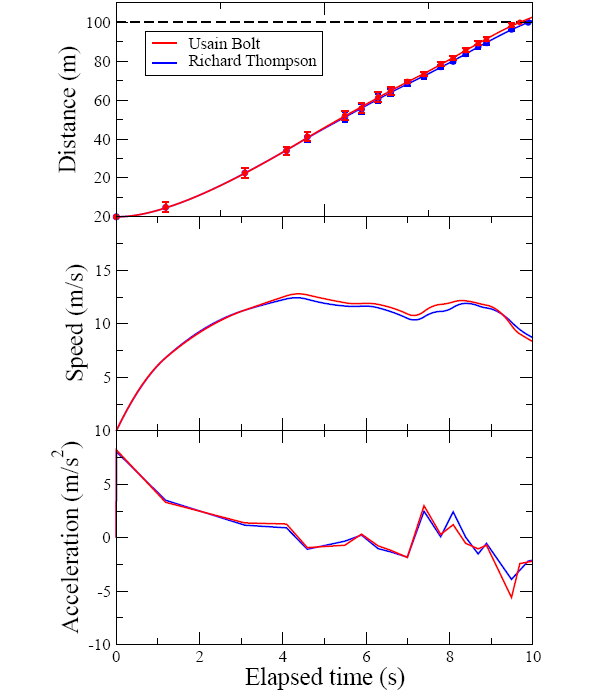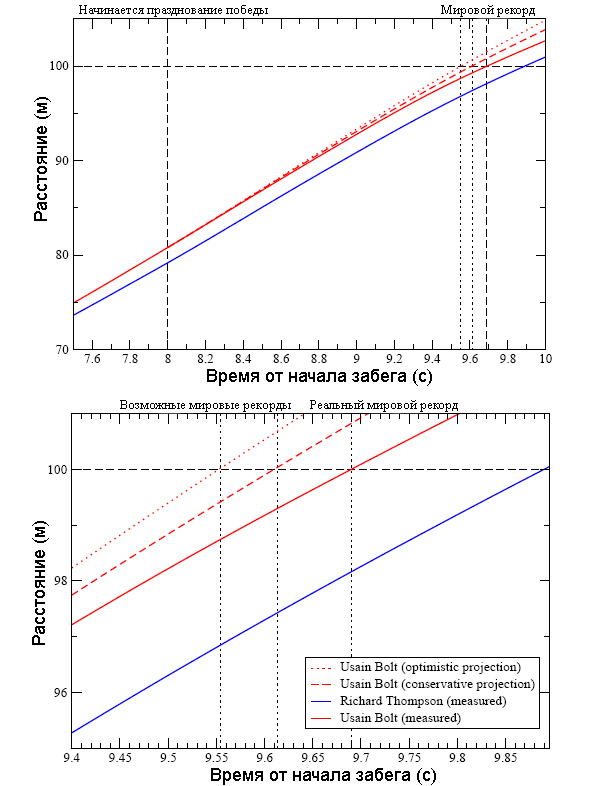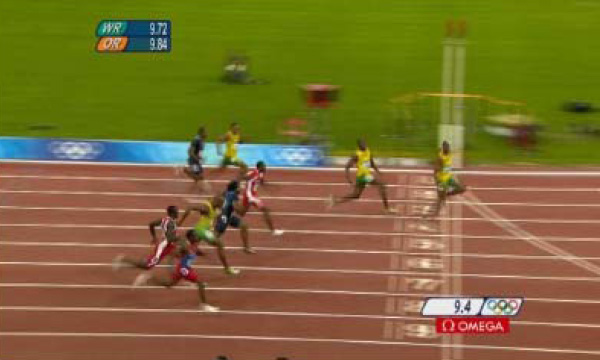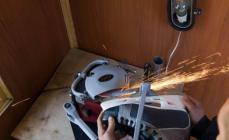The study of Norwegian physicists shows that the world record in running by 100 meters, established by the Yamaician athlete by a grain bolt on a recently ended Olympiad in Beijing, could not be 9.69 seconds, but almost 9.5 s, if the winner did not begin to celebrate Your success on the finish of the distance.
On August 16, 2008, the Yamaican Sprinter Usain Bolt broke the world record in running by 100 meters (from now on it equals 9.69 seconds), thereby improving the achievement of 0.03 seconds. This is a fantastic result. His race became a grandiose action not only because of the new world record, but also because as Fight winner. The fact is that in the last 20 meters of Zareya, Usain Bolt significantly ahead of his closest pursuers and the main competitor Richard Thompson, and therefore slowed down and began to celebrate his victory (see video). At the end of the race, the whole world sports community discussed the question: how much could the time of Usain bolt could be, if he was "not fooling a fool" the residue distance? The coach of the Jamaican athlete added to the fire, saying that the world achievement could not be 9.69 s, but 9.52 or even better.
This question did not go around the Norwegian physics. In his article with the witty name of Velocity Dispersions in a Cluster of Stars: How fast Could USain Bolt Have Run? ("Speed \u200b\u200bdispersion in a star cluster: how quickly will the Ugein bolt could run?") They tried to answer it. Physicists decided to find out what the world record in running at 100 m, if Usain bolt did not celebrate his success of the remaining 20 meters, and "in good faith" retold.
The authors studied about 30 fire frames at different points in time. t.Starting from the start and ending with the finish (see Fig. 1). This allowed them to determine the dependence of the situation. s. Usace Bolt and Richard Thompson, finishing the second, from time to time, and further, producing differentiation, obtain charts of speed functions v.(t.) and acceleration a.(t.) For both runners (see Fig. 2).

Having studied these dependencies, several interesting conclusions can be made: a) the first 4 seconds, which corresponds to 35 meters of distance, the specimens of the bolt and Richard Thompson are practically no different; b) his victory, the Jamaican sprinter "provided" approximately in the range of 4-8 seconds; c) after the 8th second there is a noticeable reduction in the speed and acceleration of the bolt; D) The last seconds of Richard Tompson began more powerful than the winner.
Thus, in order to establish what the hypothetical world record should be, it is necessary to analyze the kinematic characteristics of the sweep of the bolt after the 8th second. The authors of the article consider two scenarios: Usain Bolt on the last meters of his race ran with the same dependence but(t.) As Richard Thompson (scenario 1), or the acceleration profile of the acceleration from time to the Usaina bolt 0.5 m / s 2 is higher than that of Richard Thompson (Scenario 2). Why exactly 0.5 m / s 2? This is a hypothesis of researchers, which they argue that Usain Bolt is known for excellent results not only on the standard, but also on a longer distance 200 m. So 0.5 m / s 2 seems to be a realistic assumption.
By choosing the value of the position and speed of the bolt as the initial conditions on the 8th second, the authors re-calculate the dependence s.(t.) I. v.(t.) An Yamaican athlete on the remaining section of the distance, taking into account each of the two possible scenarios mentioned above.

In fig. 3 Rependers obtained s.(t.) For the first and second scenario (dotted and dotted red curves, respectively), compared with the actual dependence (red solid curve) of the oxyne bolt position on the roller. A similar dependence is also provided for Richard Thompson (blue curve).
The final result is as follows. Given the calculation error (they accounted for 5%), we obtain that the world record could be 9.61 ± 0.04 ° C (scenario 1) or 9.55 ± 0.04 ° C (Scenario 2).
Visually, this means that if Usain bolt "met" during about 9.5 seconds, its advantage over rivals could be even more tangible (see Fig. 4).

Interestingly, according to the researchers, the world record could even be 9.5 seconds, and even less if the weather "helped" Jamaitz. According to IAAF standards (athletic federation), during the race, the speed of associated wind is allowed not more than 2 m / s. And as studies show, the passing wind "force" 1 m / s improves the time of the run of 100 meter distance by 0.05 s. Unfortunately, during the running of the Ugein bolt in Beijing, a calm was observed, otherwise the world record could be less than 9.4 s. So the assertion of the Yamaican Sprinter coach about the possibility of an even more impressive world record is not such an alone.






